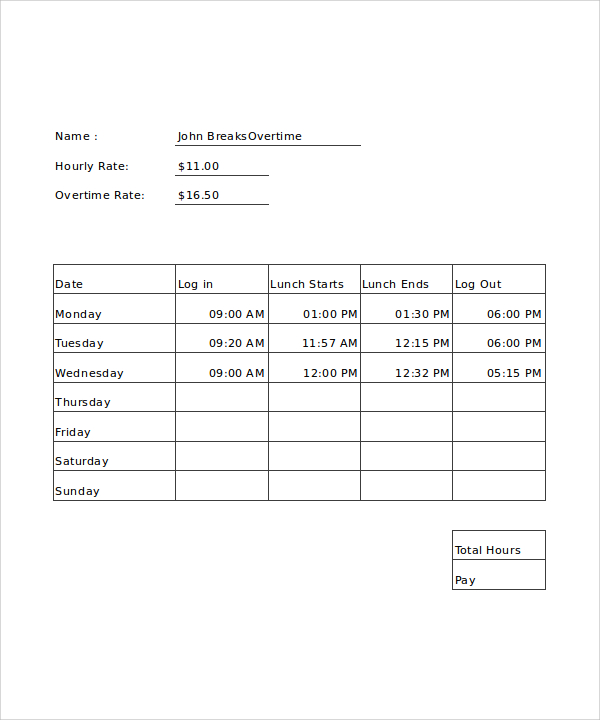

Step 5: Compare Daily and Weekly OvertimeĬalifornia employers must calculate both daily and weekly overtime hours for an employee. Please note the below examples will calculate overtime for the workweek only, it will not show overtime for longer workdays.

The employee will receive 1.5 times for 4 hours due to the two longer days. Because the employee worked 13 hours on Wednesday, they will receive overtime at 1.5 times for 4 hours and double for 1 hour.Īn employee worked a seven day workweek, two of which were longer than 8 hours. They worked a half-day on Tuesday and worked a longer shift on Thursday.Īn employee worked six days a week, one of which was longer than 8 hours. This is not inclusive of the 12 th This rate also applies to all hours over 8 hours an employee works on the 7 th consecutive day they worked in a workweek.Īn employee works four days a week. Double the regular rate of pay – All hours over 12 hours an employee works in a workday are to be paid at double their usual pay rate.This rate also applies to the first 8 hours an employee works on the 7 th consecutive day they worked in a workweek. 1.5 times the regular rate of pay – All hours worked between 8 and 12 a day, including the 12 th hour, are to be paid at 1.5 times.Step 3: Calculate the Amount of Daily OvertimeĬalifornia law requires all non-exempt employees to be paid daily overtime. Any hours over 40 in a workweek are to be paid at overtime rate. Any hours over 8 in a workday are to be paid at overtime rate. Employers can use these records to add up the total hours worked for each workday and workweek. Step 2: Total the Employee’s Hours For Each Workday and Each WorkweekĮmployees will track the start and end times for each shift and the breaks taken during those shifts. However, once an employee’s workweek has been established, the employer cannot change it to avoid paying overtime. Different employees can have different workweeks within the same company. In California, a workweek is defined as seven consecutive days, starting on a workday of an employers choice. In California, non-exempt employees are entitled to overtime rates on any hours worked over a 40 hour workweek. Once an employer has established their workday, they cannot change it unless there is a legitimate business reason for the change. If they do not establish one, then it is automatically set as 12:01am until midnight. The employer can establish what they consider the workday to be. Under California overtime laws, a workday is defined as a consecutive 24-hour period which starts at the same time on each day. Non-exempt employees are entitled to overtime rates on any hours worked over an 8 hour workday.

Step 1: Differentiate Between Workdays and Workweeks Workday This includes non-exempt employees who are paid on salary, piece rate, daily rate, or hourly basis. These overtime rates will be paid to non-exempt employees who work over 8 hours a day or over 40 hours per week. Labor Commissioner Board Complaint DefenseĬalifornia law requires employers pay an overtime rate of 1.5 times the regular rate of normal pay.


 0 kommentar(er)
0 kommentar(er)
